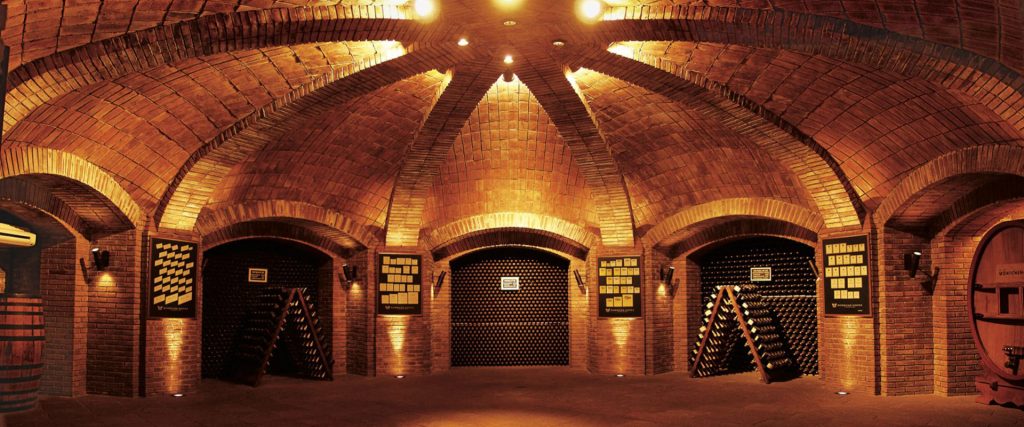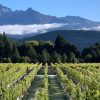Many people see Argentina as part of the ‘new world’ of wine but in fact wine has been produced in the country for the past five centuries. Its history has been based around the Cuyo region where, in the middle of the 19th century the first viticultural revolution occurred, spurred by the arrival of millions of European immigrants who founded hundreds of wineries. Many of these establishments are still running and producing world class wines today. In this text, we celebrate 13 oldest wineries in Argentina that have been around for a century or more.
These are the oldest wineries in Argentina
Graffigna
Santiago Graffigna was one of the millions of Italian immigrants who arrived from Argentina at the end of the 19th century in search of a better life. He was just 12 years old when he got onto the boat, summoned to help out his uncle at a winery in San Juan. In 1870 he would found his own company, which soon became one of the largest in the region. Today this winery-museum contains a fascinating collection of tools and objects from the early days of Argentine winemaking as well as being one of the oldest wine-producing establishments in the country.
Bodega y Viñedos Goyenechea
The brothers Santiago and Narciso Goyenechea emigrated from Spain in 1852 and like many other people from the Basque country, found that Argentina was a good place for business. Their first stop was Buenos Aires, where they started a general store that sold, among many other things, wine made by the Arizu family. As the years passed, their business grew and they were able to form a partnership with said family and set up the largest vineyard in the world in San Rafael, the southern oasis of Mendoza. The winery, founded in 1868, has preserved its historic charm and is now run by members of the fourth and fifth generation of the Goyenechea family.
Escorihuela Gascón
Don Miguel Escorihuela Gascón was born in 1861 in Aragón, Spain, and at the age of 19 left his home to come to Argentina. A driven, enthusiastic young man, he bought land in Mendoza, planted vineyards and in 1884 founded Establecimientos Vitivinícolas Escorihuela in Godoy Cruz. The building constructed by Don Miguel is still the headquarters of the winery, which now exports across the world.

Bodega La Rural
In 1885, Felipe Rutini built a winery in Maipú, Mendoza, that he dubbed ‘La Rural’. These were boom years in Argentina and in the Cuyo region the arrival of the railway facilitated wine sales to the major cities. Taking advantage of this new economic opportunity, Rutini turned his winery into one of the most prosperous in Mendoza. Today, the Italian immigrant’s enthusiasm is still tangible in each of the 4500 exhibits on display at the winery’s Museum of Wine, which bears unique testimony of a revolutionary period in Argentine viticulture. He now lends his name to Rutini Wines, one of the most prestigious wine brands in Argentina.
Bodega Santa Ana
In 1891 in Guaymallén, Mendoza, Luis Tirasso started his own viticultural establishment under the name Santa Ana. Still running, today it it one of the most popular and respected brands on the Argentine market offering excellent value for money at home and abroad.
Michel Torino
Michel Torino-Bodega La Rosa was founded by the brothers David and Salvador Michel in 1892 in Cafayate, Salta. Their success still seems surprising today given that the railway never got to the region. The winery dominated the Cafayate valley and was renamed El Esteco in the early 2000s. Today, the 19th century establishment in the town is open to visitors. From the top of the bell tower one feels as though they’ve travelled a hundred years back in time.
Norton
The British engineer Edmund James Palmer Norton came to Argentina in 1895 to work on the railway line being constructed across the Andes to connect Mendoza to Chile. Having fallen in love with Mendoza, once the job was done he decided to get into the growing wine industry. He chose Luján de Cuyo, a remote, inhospitable area at the time, to plant his first vines and in 1919 built a winery. Since 1989 it has belonged to the Austrian businessman Gernot Langes-Swarovski and is run by his son Michael Halstrick, who keeps the British engineer’s entrepreneurial spirit alive with wines that are winning acclaim across the globe.
https://blog.winesofargentina.com/10-frequently-asked-questions-about-argentine-wine/
Bodegas López
A member of a family that cultivated vines and olive groves in Spain, José Gregorio López Rivas arrived at the port of Buenos Aires in 1886 followed a few years later by his brothers. While phylloxera was causing havoc in Europe, they sought to keep the family tradition alive in the new world. Maipú, Mendoza, became their new home and the setting for their return to viticulture. In March 1898 they bottled their first wines under the brand José López y Hnos. Since then, the company has stayed in the family respecting a legacy that has come to be known as ‘López style’ with wines made in large oak vats from Nancy.
Luigi Bosca – Familia Arizu
At the tender age of 7, Leoncio Arizu left his home town of Unzué in Navarra to join his uncle Balbino Arizu in the Americas. The year was 1890. By 1901, Leoncio had set up his own winery in Mendoza. Later on he formed a partnership with the Piedmontese Bosca family and they founded the winery we know today as Bodega Luigi Bosca – Familia Arizu. Still in the family, it is now well-established as a producer of internationally renowned premium wines.
Humberto Canale
This winery in Alto Valle in Río Negro pioneered wine production in Patagonia. Founded in 1909 by the engineer Humberto Canale, today it is still the largest winery in the region and its vineyards are the oldest in Patagonia. Still run by the Canale family, the establishment, which makes wines of undisputed quality, provides a tour that gives an idea of what it was like to make wine in such a remote region at the time.
Finca Flichman
In 1910, Sami Flichman, a prolific textile impresario, bought a winery in Barrancas, Maipú, Mendoza, and re-christened it with his own name. Winemaking immediately became his main activity and his son Isaac continued the tradition along with the celebrated winemaker Roberto De La Mota. Midway through the 20th century, Finca Flichman had become one of the most exclusive on the Argentine market. Since 1998 it has been owned by the Portuguese group Sogrape. Their wine Caballero de la Cepa has become an Argentine classic.
Trapiche
‘El Trapiche’ was the name of the vineyard in Godoy Cruz founded in 1883 by Don Tiburcio Benegas, one of the founding fathers of the Argentine wine industry. Benegas became a successful businessman and was even appointed Governor of Mendoza, all the while growing his winemaking business with vineyards in different areas of the province. Trapiche is currently one of the most prestigious Argentine brands in the world. The establishment is now located in Maipú, built in 1912: within its walls one lives and breathes the wine history of Argentina.
Colomé 1831
History has as many twists and turns as the river that irrigates the vines of Colomé. The Isasmendi family set up the winery in 1831 in a remote corner of the Calchaquí Valley with terracotta amphora that continued to be used well into the 20th century. Today, the old adobe winery can be visited although the new hi-tech building constructed by Donald Hess, from Switzerland, is rather more spectacular. Today the winery is run by his children. When it comes to heritage, however, the best kept secret lies in the vines: some plants have been productive since the 19th century – pre-phylloxera genetic material. They’re quite a sight.



